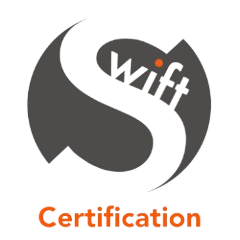Every November, the Health and Safety Executive (HSE) publishes its annual statistics. It’s a bit like the nation’s health and safety report card – and let’s be honest, the grades aren’t exactly glowing. The 2024/25 figures reveal 1.9 million workers suffering work-related ill health, with stress, depression, and anxiety topping the charts. Add to that 135 tragic fatalities and over 600,000 non-fatal injuries, and you’ve got a picture that should make any business owner sit up straighter in their chair. The economic cost? A staggering £20 billion a year. That’s not pocket change, it’s the equivalent of misplacing the GDP of a small country.
Now, statistics can feel abstract. Numbers on a page don’t always hit home until you realise they represent real people – your colleagues, your staff, maybe even you. Behind every figure is a story: a worker signed off with stress, a fall from height that changed a family’s life, or a production line halted because someone didn’t spot a hazard.
So, what’s the answer? More posters on the wall saying “Safety First”? Another round of hi-vis jackets? Not quite. The real solution lies in embedding safety into the DNA of your organisation. And that’s where ISO 45001 comes in.
Why ISO 45001 Matters
ISO 45001 is the international standard for occupational health and safety management systems. It’s not just a tick-box exercise resulting in a nice certificate on the wall – it’s a structured framework that helps businesses identify risks, prevent incidents, and foster a culture where safety isn’t an afterthought but a daily habit.
From our perspective as an unaccredited certification body, the beauty of ISO 45001 is its accessibility. Small and mid-size enterprises often feel daunted by accredited certification: complex audits, hefty fees, and jargon that could make even the most seasoned manager glaze over. We strip away the jargon and focus on what matters – helping smaller organisations verify practical systems that actually work.
Linking the Standard to HSE’s Key Findings
Let’s connect the dots between those sobering HSE statistics and what ISO 45001 can do:
- Ill Health (1.9 million cases): ISO 45001 doesn’t just look at physical hazards. It requires organisations to assess psychosocial risks too. Stress management policies, wellbeing initiatives, and open communication channels are part of the package. In other words, it tackles the elephant in the room, i.e. mental health.
- Fatal Injuries (135 deaths): Hazard identification and control measures are at the heart of the standard. Whether it’s fall protection in construction or machine guarding in manufacturing, ISO 45001 insists you don’t wait for tragedy before acting.
- Non-Fatal Injuries (600,000 cases): The standard promotes consistent reporting and investigation of near misses. Think of it as learning from the “almost accidents” before they become headline news.
- Economic Costs (£20 billion): By reducing accidents and ill health, certification lowers insurance premiums, legal liabilities, and lost productivity. In addition to its most prominent objective of saving lives, it’s also about saving money.
Beyond Compliance: Building Trust and Value
Here’s the thing: certification isn’t primarily about passing audits. It directs and facilitates demonstrating competence to insurers, investors, and clients. In tender processes, ISO 45001 is a badge of professionalism. For employees, it’s proof that management genuinely values their wellbeing.
And let’s not forget culture. When staff see safety procedures consistently applied, they’re more likely to engage, report hazards, and contribute to improvement – give feedback and uphold the system you have built. That engagement reduces turnover and builds morale. It’s a virtuous circle: safer workplaces, happier staff, stronger business.
Where Certification Falls Short
Of course, we need to be candid. ISO 45001 can flop if treated as a “tick-box” routine. Documentation without culture change is like brewing tea without boiling the water – it looks the part but doesn’t deliver.
Leadership commitment is non-negotiable. Directors must champion safety, not delegate it away. If senior management treat certification as a nuisance, staff will too. And auditors, whether accredited or not, can spot the difference between a living system and a dusty binder.
Practical Tips for SMEs
So, how do you make ISO 45001 work for you?
- Start Small: Map your existing processes –you probably already follow many ISO 45001 principles without realising it.
- Engage Staff: Involve employees in risk assessments and safety meetings. Their insights are invaluable.
- Keep It Simple: Use plain-English procedures that staff can actually follow. No one wants a manual thicker than War and Peace.
- Measure and Improve: Track incidents, near misses, and corrective actions. Share results openly. Celebrate improvements –cake in the break room works wonders.
- Choose Accessible Support: Work with certification partners who focus on practical implementation, not just paperwork.
Final Thoughts
The HSE statistics are a wake-up call. Ill health and injuries remain stubbornly high, costing billions and damaging lives. ISO 45001 offers SMEs a way forward: a practical, scalable system that reduces risks, builds trust, and strengthens resilience.
From urban workshops to construction sites, certification is more than a badge – it’s a bridge between compliance and culture. Done right, it transforms safety from a burden into a business advantage.
So, next time you glance at those HSE figures, don’t just sigh and carry on. See them as a challenge and an opportunity. Because with ISO 45001, you’re not just ticking boxes. You’re protecting people, strengthening your business, and proving that safety really does pay.
Get your ISO 45001 certification with us:




